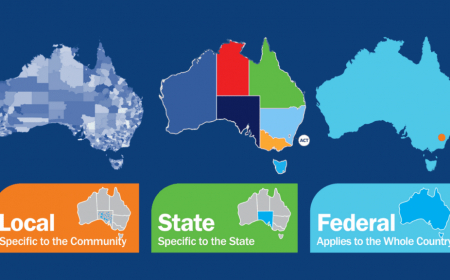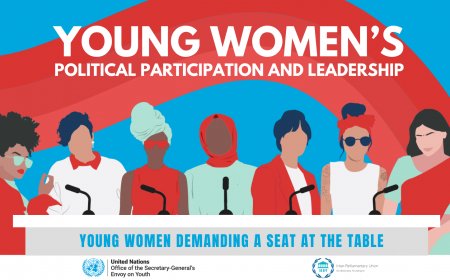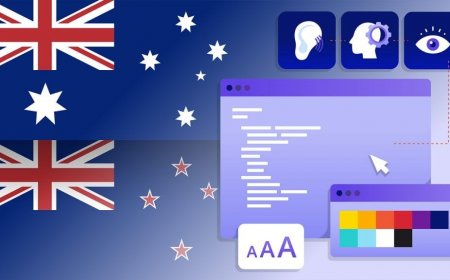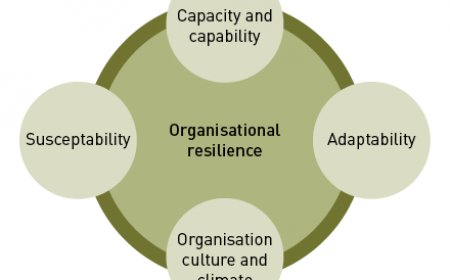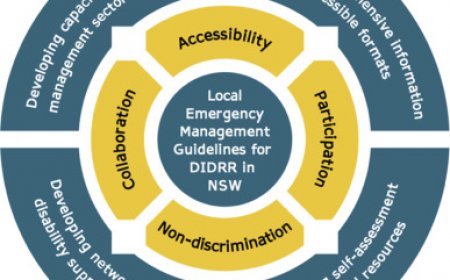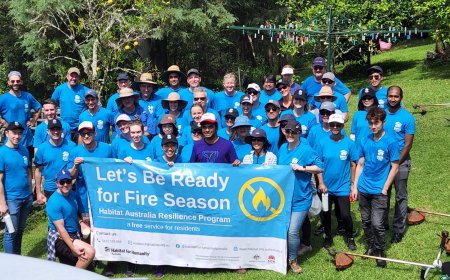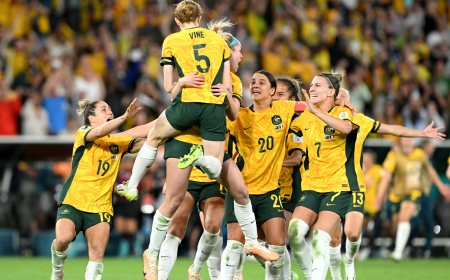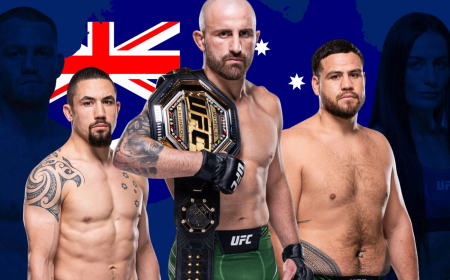Australia Ice Hockey Scene: Is NHL Catching On?
Explore the thriving Australian ice hockey scene, from the AIHL to NHL engagement, and discover how the sport is growing through accessibility, grassroots programs, and fan engagement.
Ice hockey, though not traditionally associated with Australia, has carved out a unique niche in the country's sporting culture. The sport’s appeal lies in its fast-paced action, physical intensity, and strategic depth, making it a captivating spectacle for both players and spectators. In recent years, the Australian ice hockey scene has experienced significant growth, fueled by increased participation, improved infrastructure, and a growing fan base. This article delves into the evolution of ice hockey in Australia, examining how it has transitioned from a relatively obscure pastime to a burgeoning sport with potential ties to the National Hockey League (NHL) .
The history of ice hockey in Australia dates back to the early 20th century, but it wasn’t until the latter half of the century that the sport began to gain traction. Initially confined to small pockets of enthusiasts, ice hockey gradually expanded its reach as rinks were established in major cities like Melbourne, Sydney, and Perth. Today, the Australian Ice Hockey League (AIHL) stands as the premier competition, showcasing the talents of local players while also attracting international athletes seeking competitive opportunities outside traditional hockey markets.
This article explores the factors contributing to the rise of ice hockey in Australia, including grassroots development programs, media coverage, and corporate sponsorships. Additionally, we analyze whether the NHL is beginning to take notice of Australia’s burgeoning hockey community and what this could mean for the future of the sport on the continent. By examining these elements, we aim to provide a comprehensive understanding of where Australia stands in the global ice hockey ecosystem and whether the NHL’s influence is set to grow within the region.
The Evolution of Ice Hockey in Australia
The journey of ice hockey in Australia is one marked by resilience, innovation, and gradual acceptance within the broader sporting landscape. Historically overshadowed by more popular sports such as cricket, rugby, and Australian rules football, ice hockey has steadily built a foundation that reflects both its challenges and triumphs. The origins of ice hockey in Australia can be traced back to the early 1900s, when the first recorded games took place in Melbourne. However, it wasn’t until the mid-20th century that organized leagues and structured competitions began to emerge, laying the groundwork for the modern-day iteration of the sport.
One of the pivotal moments in the development of ice hockey in Australia was the establishment of dedicated ice rinks. These facilities, initially concentrated in urban centers, became hubs for fostering talent and nurturing a sense of community among players and fans alike. The introduction of artificial ice technology further revolutionized the sport, enabling year-round play and expanding accessibility to regions previously limited by climate constraints. Over time, the proliferation of rinks across cities like Sydney, Brisbane, and Adelaide contributed significantly to the sport’s visibility and appeal.
Another critical factor in the growth of ice hockey in Australia has been the role of grassroots initiatives . Programs aimed at introducing children and young adults to the sport have been instrumental in cultivating new generations of players. Organizations such as Hockey Australia have spearheaded efforts to provide affordable access to equipment, coaching, and training sessions. These initiatives have not only increased participation rates but also helped break down barriers related to cost and perceived exclusivity, making ice hockey a more inclusive option for aspiring athletes.
Simultaneously, the formation of the Australian Ice Hockey League (AIHL) in 2000 represented a watershed moment for the sport. As the country’s premier professional league, the AIHL brought together teams from various states, offering a platform for elite-level competition. The league’s structure, which includes both domestic players and imports, has elevated the standard of play while also exposing Australian athletes to international styles and strategies. This blend of local and global talent has been key to enhancing the league’s credibility and drawing larger audiences.
Media coverage has played an equally vital role in shaping the trajectory of ice hockey in Australia. While mainstream attention remains limited compared to other sports, niche platforms and social media channels have provided valuable exposure. Highlight reels, player interviews, and live-streamed matches have allowed fans to engage with the sport in real-time, creating a sense of immediacy and connection. Furthermore, partnerships with broadcasters and streaming services have broadened the reach of AIHL games, bringing the excitement of ice hockey to households nationwide.
Corporate sponsorship has also emerged as a driving force behind the sport’s growth. Brands recognizing the untapped potential of ice hockey have invested in team sponsorships, arena naming rights, and promotional campaigns. These financial injections have enabled clubs to improve facilities, hire experienced coaching staff, and attract high-caliber players. Such investments underscore the increasing commercial viability of ice hockey in Australia and signal a shift toward greater professionalism within the industry.
Despite these advancements, challenges remain. Geographic isolation, limited resources, and competition from established sports continue to pose obstacles for the widespread adoption of ice hockey. Nevertheless, the progress achieved thus far demonstrates the sport’s capacity to adapt and thrive in a non-traditional market. By building on existing momentum and addressing areas for improvement, the future of ice hockey in Australia appears promising, setting the stage for even greater achievements in the years to come.
The Rise of the Australian Ice Hockey League (AIHL)
The Australian Ice Hockey League (AIHL) stands as a cornerstone of the nation’s ice hockey ecosystem, representing the pinnacle of competitive play and serving as a catalyst for the sport’s ongoing evolution. Established in 2000, the AIHL has grown from a modest regional competition into a highly regarded professional league that draws participants and spectators from across the country. Its rise has been characterized by strategic expansions, innovative operational models, and a commitment to elevating the standard of play. This section examines the league’s structure, key milestones, and its transformative impact on the broader Australian ice hockey scene.
At its core, the AIHL operates as a semi-professional league, featuring teams predominantly based in metropolitan areas such as Melbourne, Sydney, and Perth. The league’s structure is designed to balance competitive parity with accessibility, ensuring that both seasoned veterans and emerging talents have opportunities to showcase their skills. Each season typically spans from April to September, aligning with the Southern Hemisphere winter months and allowing for optimal playing conditions. Teams compete in a regular-season format followed by playoffs, culminating in the prestigious Goodall Cup , which serves as the ultimate prize for AIHL champions.
One of the defining features of the AIHL is its reliance on a hybrid roster model, blending domestic players with international imports. This approach has proven instrumental in raising the overall quality of play while simultaneously providing Australian athletes with invaluable exposure to diverse playing styles and techniques. Many imported players hail from North America, Europe, and Asia, bringing with them experience from higher-tier leagues and enriching the competitive environment. For instance, the inclusion of former NCAA Division I players and European league veterans has injected a level of sophistication and tactical nuance previously unseen in Australian ice hockey.
The league’s growth has been punctuated by several key milestones that underscore its increasing prominence. In 2015, the AIHL introduced the Brett O’Malley Shield , awarded annually to the regular-season champions, thereby adding another layer of prestige to the competition. Additionally, the league has embraced technological advancements, implementing video review systems and enhanced statistical tracking to ensure fair play and transparency. These innovations have not only improved the integrity of the game but also heightened its appeal to fans who value accuracy and accountability.
Beyond its on-ice achievements, the AIHL has made significant strides in fostering community engagement and promoting inclusivity. Initiatives such as “Try Hockey” days and youth outreach programs have successfully attracted new demographics to the sport, breaking down traditional barriers and encouraging broader participation. Moreover, the league has prioritized gender equality, supporting women’s ice hockey through events like the annual Women’s Classic , which highlights female talent and inspires the next generation of female players.
From a commercial standpoint, the AIHL has demonstrated remarkable resilience and adaptability. Sponsorship deals with major brands, coupled with partnerships with local businesses, have provided much-needed financial stability. Venues hosting AIHL games, such as the O’Brien Group Arena in Melbourne and the Perth Ice Arena , have undergone renovations to enhance spectator experiences, featuring upgraded seating, concessions, and entertainment options. These improvements have contributed to rising attendance figures and a growing fan base, reinforcing the league’s position as a viable entertainment option.
Perhaps most notably, the AIHL has served as a springboard for Australian players aspiring to compete internationally. Several athletes who honed their skills in the league have gone on to represent the national team or secure contracts with overseas clubs. This upward mobility underscores the league’s role as a developmental pathway, bridging the gap between grassroots participation and elite competition. The success stories of these individuals serve as testaments to the AIHL’s ability to nurture talent and prepare players for the global stage.
In summary, the Australian Ice Hockey League has emerged as a dynamic and influential entity within the country’s sporting landscape. Through its commitment to excellence, innovation, and community engagement, the AIHL has not only elevated the profile of ice hockey in Australia but also laid the groundwork for sustained growth and international recognition. As the league continues to evolve, it remains poised to shape the future of the sport and inspire generations of players and fans alike.
Challenges Facing the Growth of Ice Hockey in Australia
Despite the undeniable progress of ice hockey in Australia, the sport continues to grapple with a host of challenges that threaten to impede its expansion and long-term sustainability. Among these obstacles, geographic isolation, limited resources, and fierce competition from established sports stand out as the most pressing issues. Addressing these hurdles is crucial for ensuring that ice hockey can achieve its full potential within the Australian sporting ecosystem.
Geographic Isolation
Australia’s vast size and relative remoteness from traditional ice hockey powerhouses present significant logistical and cultural barriers. Unlike countries in North America or Europe, where ice hockey is deeply ingrained in the national identity, Australia lacks a historical connection to the sport. This absence of cultural familiarity means that ice hockey must work harder to establish itself as a mainstream attraction. Furthermore, the geographic distance from major hockey markets complicates efforts to foster international collaborations, exchange programs, and scouting opportunities. For example, while European and North American leagues benefit from proximity to neighboring countries with similar sporting traditions, Australian teams face higher costs and logistical complexities when organizing tours or inviting foreign talent.
Additionally, the distribution of ice rinks across the country remains uneven, with most facilities concentrated in urban centers. Rural and regional areas, where interest in ice hockey may exist, often lack access to suitable venues, limiting participation and stifling grassroots development. Even within cities, the scarcity of rinks can lead to overcrowding and scheduling conflicts, hindering the ability of leagues and clubs to accommodate growing demand.
Limited Resources
Resource constraints are another formidable challenge facing the Australian ice hockey scene. Building and maintaining ice rinks is an expensive endeavor, requiring significant capital investment and ongoing operational costs. The energy-intensive nature of artificial ice production, combined with Australia’s generally warm climate, exacerbates these expenses. As a result, many clubs operate on tight budgets, relying heavily on volunteer labor and community fundraising to sustain their activities.
The financial burden extends to players as well. High costs associated with equipment, travel, and registration fees can deter individuals from pursuing the sport, particularly those from lower-income backgrounds. While initiatives like equipment rental programs and scholarship funds have been introduced to mitigate these barriers, they remain insufficient to address the scale of the problem. Moreover, the scarcity of specialized coaching and training resources limits the development of elite-level talent, making it difficult for Australian players to compete on the international stage.
Competition from Established Sports
Perhaps the most daunting challenge is the intense competition posed by Australia’s traditional sports. Cricket, rugby, soccer, and Australian rules football dominate the sporting landscape, commanding the lion’s share of media coverage, corporate sponsorship, and public attention. These sports benefit from decades of institutional support, entrenched fan bases, and robust infrastructure, leaving little room for emerging disciplines like ice hockey to gain traction.
The dominance of these sports creates a self-perpetuating cycle, wherein limited resources and attention are directed toward established codes, further marginalizing alternatives. For instance, schools and community organizations often prioritize funding and facilities for popular sports, leaving ice hockey programs underfunded and underserved. Similarly, media outlets allocate minimal airtime to ice hockey, reducing its visibility and appeal to potential fans and sponsors. Without adequate exposure, the sport struggles to build the critical mass needed to drive sustained growth.
Cultural Perceptions and Awareness
Cultural perceptions also play a role in hindering the sport’s expansion. Ice hockey is often viewed as a niche or exotic activity, rather than a legitimate competitive pursuit. Misconceptions about the sport being inaccessible or elitist persist, deterring individuals from exploring it further. Efforts to rebrand ice hockey as an inclusive and exciting option have shown promise, but changing deeply ingrained attitudes requires time and consistent messaging.
Pathways to Overcoming Challenges
To overcome these challenges, stakeholders must adopt a multifaceted approach. Expanding the network of ice rinks, particularly in underserved regions, would help democratize access to the sport and foster grassroots participation. Securing additional funding through government grants, corporate sponsorships, and philanthropic donations could alleviate financial pressures and enable clubs to invest in infrastructure and talent development. Collaborations with international leagues and federations could facilitate knowledge sharing and create pathways for Australian players to gain exposure abroad.
Promoting ice hockey through targeted marketing campaigns, leveraging digital platforms, and securing broadcast deals would enhance its visibility and attract new audiences. Partnerships with schools and community groups could introduce the sport to younger demographics, while initiatives aimed at diversifying participation—such as women’s and adaptive hockey programs—would broaden its appeal. By addressing these challenges head-on, the Australian ice hockey community can pave the way for a brighter and more inclusive future.
The NHL’s Growing Interest in International Markets
As the National Hockey League (NHL) continues to expand its global footprint, the organization has increasingly turned its attention to untapped markets, including Australia. While historically focused on North America and select European countries, the NHL recognizes the immense potential of diversifying its audience base to include regions where ice hockey is still gaining traction. This strategic pivot reflects not only the league’s ambition to grow its brand but also its desire to cultivate new generations of fans and players who can contribute to the sport’s longevity and vibrancy.
One of the primary drivers behind the NHL’s interest in international markets is the saturation of traditional hockey strongholds. In North America, for instance, the league faces stiff competition from other major sports leagues, such as the NFL, NBA, and MLB, which command significant portions of the sports entertainment market. Similarly, in Europe, established hockey nations like Canada, Sweden, and Finland have reached a level of maturity where further growth is incremental rather than exponential. By venturing into markets like Australia, the NHL aims to tap into fresh demographics and unlock new revenue streams, whether through merchandise sales, broadcasting rights, or live event attendance.
Australia, in particular, presents a compelling opportunity for the NHL due to its unique combination of factors. First, the country boasts a robust sporting culture, with a population accustomed to engaging with high-energy, competitive sports. Although ice hockey is not yet a mainstream attraction, Australians’ enthusiasm for athletic pursuits positions the sport well for adoption. Second, the presence of a dedicated and growing ice hockey community, supported by the Australian Ice Hockey League (AIHL) , provides a ready-made foundation for NHL engagement. The AIHL’s success in fostering local talent and organizing professional-level competitions demonstrates the sport’s viability and appeal, making it an attractive partner for NHL initiatives.
Moreover, the NHL’s focus on international markets aligns with broader trends in global sports entertainment. The rise of digital platforms and streaming services has made it easier than ever to reach audiences worldwide, breaking down geographical barriers and enabling fans to connect with their favorite teams and players regardless of location. For the NHL, this technological shift represents an opportunity to introduce Australian audiences to the excitement of professional ice hockey through curated content, highlight reels, and interactive experiences. Social media campaigns, virtual meet-and-greets, and localized marketing efforts further amplify the league’s ability to resonate with diverse audiences.
Another key aspect of the NHL’s strategy involves leveraging marquee events to generate buzz and build awareness. The league has already experimented with staging exhibition games and pre-season matches in non-traditional markets, such as China and Europe, to gauge interest and lay the groundwork for future expansion. Similar efforts could be replicated in Australia, where hosting NHL games—even if only temporarily—would provide fans with a firsthand experience of the sport’s intensity and spectacle. These events could also serve as catalysts for deeper engagement, inspiring Australians to explore local leagues, attend AIHL games, or even take up the sport themselves.
The NHL’s interest in Australia is further bolstered by the country’s economic stability and high disposable income levels, which make it an attractive target for commercial ventures. Corporate sponsorships, merchandise sales, and ticket revenue from live events all represent lucrative opportunities for the league. Additionally, partnerships with Australian brands and businesses could yield mutually beneficial outcomes, enhancing the NHL’s visibility while also supporting local economies.
Finally, the NHL’s outreach to international markets is driven by a long-term vision of fostering global inclusivity and diversity within the sport. By investing in regions like Australia, the league not only expands its reach but also contributes to the development of a more interconnected and representative hockey community. This inclusive approach aligns with the NHL’s broader mission to grow the game responsibly and sustainably, ensuring that future generations of players and fans feel welcomed and valued.
In summary, the NHL’s growing interest in international markets, particularly Australia, underscores the league’s commitment to innovation, expansion, and cultural exchange. By capitalizing on Australia’s sporting enthusiasm, leveraging technological advancements, and hosting impactful events, the NHL is poised to make significant inroads into the Australian market. These efforts not only benefit the league but also strengthen the global ice hockey ecosystem, paving the way for a more vibrant and diverse future.
Potential Benefits of NHL Engagement in the Australian Ice Hockey Scene
The prospect of the National Hockey League (NHL) deepening its engagement with the Australian ice hockey community holds transformative potential for both the sport and the broader sporting landscape in the country. Such involvement could catalyze unprecedented growth, elevate the quality of play, and foster a stronger connection between Australian fans and the global hockey community. By leveraging the NHL’s resources, expertise, and brand equity, the Australian ice hockey scene stands to benefit in numerous ways, ranging from infrastructural advancements to heightened cultural relevance.
One of the most immediate and tangible benefits of NHL engagement would be the infusion of financial investment into the Australian ice hockey ecosystem. The NHL’s entry into the market could attract significant corporate sponsorships, media rights deals, and merchandising opportunities, providing much-needed funding to support grassroots programs, facility upgrades, and professional competitions. For instance, partnerships with global brands aligned with the NHL could bring substantial capital to local clubs, enabling them to improve rink conditions, acquire state-of-the-art equipment, and hire experienced coaching staff. This financial boost would not only enhance the quality of the AIHL but also make the sport more accessible to aspiring players who might otherwise be deterred by high costs.
Beyond financial contributions, the NHL’s involvement could dramatically elevate the standard of play in Australia. Exposure to NHL-caliber training methodologies, tactical frameworks, and player development programs would provide Australian athletes with unparalleled opportunities to refine their skills. Imagine clinics led by retired NHL stars or current professionals during off-season tours, offering hands-on mentorship to local players. These interactions could bridge the gap between amateur and elite levels, preparing Australian athletes to compete on the international stage. Furthermore, the possibility of hosting NHL exhibition games or pre-season matches in Australia would expose local players to the highest level of competition, inspiring them to strive for excellence and potentially pursue careers in North America or Europe.
The NHL’s engagement would also play a pivotal role in raising awareness and visibility for ice hockey in Australia. Currently, the sport struggles to compete with more established codes like cricket, rugby, and Australian rules football for media coverage and public attention. However, the NHL’s global brand recognition and marketing prowess could change this narrative. By collaborating with Australian broadcasters and streaming platforms, the NHL could introduce tailored content—such as highlight reels, player profiles, and behind-the-scenes footage—that resonates with local audiences. Social media campaigns targeting Australian demographics could further amplify the sport’s appeal, creating a sense of excitement and anticipation around upcoming events or developments.
Another significant advantage of NHL involvement would be the creation of pathways for international collaboration . Establishing formal partnerships between the NHL and Australian organizations, such as the AIHL, could facilitate player exchanges, coaching seminars, and joint promotional efforts. For example, top-performing Australian players could earn invitations to NHL development camps or junior leagues, gaining invaluable experience and exposure. Similarly, NHL scouts visiting Australia to identify emerging talent would validate the country’s potential as a breeding ground for future stars. These cross-border connections would not only benefit individual athletes but also strengthen the ties between the Australian ice hockey community and the global hockey fraternity.
On a cultural level, NHL engagement could help normalize ice hockey as a mainstream sport in Australia. The presence of NHL-branded events, merchandise, and ambassadors would reinforce the idea that ice hockey is a legitimate and exciting option for sports enthusiasts. Schools and community organizations might be more inclined to incorporate ice hockey into their programs if they perceive it as a globally recognized and respected discipline. Additionally, the NHL’s emphasis on inclusivity and diversity could inspire initiatives aimed at broadening participation, such as women’s and adaptive hockey programs, further solidifying the sport’s place in Australian society.
Finally, the ripple effects of NHL involvement extend beyond the confines of the rink. Hosting NHL-related events or establishing permanent partnerships could stimulate local economies by attracting tourists, generating employment opportunities, and boosting ancillary industries such as hospitality and retail. Cities with NHL-affiliated rinks or events could position themselves as hubs for sports tourism, drawing visitors from across the country and beyond. This economic impact would reinforce the case for continued investment in ice hockey infrastructure and programming, creating a virtuous cycle of growth and prosperity.
In conclusion, the potential benefits of NHL engagement in the Australian ice hockey scene are profound and far-reaching. From financial investment and skill development to increased visibility and cultural normalization, the NHL’s involvement could serve as a catalyst for sustained growth and transformation. By embracing this opportunity, Australia could not only elevate its standing in the global hockey community but also inspire a new generation of players and fans who view ice hockey as a central pillar of the nation’s sporting identity.
Current Initiatives Bridging the NHL and Australian Ice Hockey
While the NHL’s direct involvement in the Australian ice hockey scene remains nascent, several initiatives have already begun to forge meaningful connections between the two entities. These efforts, though modest in scale, demonstrate the potential for collaboration and mutual benefit, laying the groundwork for deeper integration in the future. Among these initiatives are exhibition games, player exchanges, and developmental programs, each contributing uniquely to the strengthening of ties between the NHL and Australian ice hockey.
Exhibition Games: A Glimpse of NHL Excellence
One of the most visible and impactful initiatives has been the staging of NHL exhibition games in Australia. Although infrequent, these events have provided Australian fans with a rare opportunity to witness world-class hockey up close. For example, the NHL Global Series, which has previously featured pre-season matches in Europe and Asia, has sparked discussions about extending its reach to Australia. While no official games have been held in the country to date, preliminary talks and feasibility studies suggest that such an endeavor is within the realm of possibility.
Hosting NHL exhibition games in Australia would serve multiple purposes. First, it would generate immense excitement among local fans, many of whom follow the league religiously despite the geographical distance. The chance to see NHL superstars like Connor McDavid or Auston Matthews perform live would undoubtedly draw large crowds and create lasting memories. Second, these games would act as a platform to showcase the capabilities of Australian ice rinks and facilities, proving that the country can host high-profile sporting events. Finally, the economic impact of such an event—ranging from ticket sales to hotel bookings—would underscore the viability of future NHL ventures in the region.
Player Exchanges: Pathways to Professionalism
Another promising avenue of collaboration is the facilitation of player exchanges between the NHL and Australian leagues. While still in its infancy, this initiative has already yielded encouraging results. Several Australian players have participated in NHL development camps, gaining exposure to advanced training techniques and competitive environments. For instance, Nathan Walker, a trailblazer for Australian ice hockey, became the first Australian-born player to be drafted into the NHL when he joined the Washington Capitals in 2014. His journey from the AIHL to the NHL serves as an inspiration for aspiring athletes and highlights the potential for Australian talent to succeed on the global stage.
Conversely, NHL players nearing the end of their careers or seeking temporary opportunities abroad have occasionally joined AIHL teams during the North American off-season. These short-term stints not only raise the profile of the AIHL but also provide valuable mentorship to local players. The presence of seasoned professionals elevates the standard of play and introduces Australian athletes to strategies and tactics employed at the highest levels of the sport. Such exchanges foster a spirit of camaraderie and shared learning, bridging the gap between the NHL and Australian ice hockey communities.
Developmental Programs: Nurturing Future Talent
Developmental programs represent a third pillar of collaboration between the NHL and Australian ice hockey. Recognizing the importance of grassroots initiatives, the NHL has expressed interest in supporting programs aimed at nurturing young talent in non-traditional markets. In partnership with Hockey Australia and the AIHL, the league has explored opportunities to introduce coaching clinics, skill workshops, and youth tournaments designed to engage the next generation of players.
These programs often feature NHL alumni or minor league coaches who travel to Australia to conduct training sessions. Their expertise brings a level of professionalism and rigor that is invaluable for developing foundational skills. Additionally, the use of NHL-branded materials and curricula ensures consistency and alignment with global best practices. By investing in the development of young athletes, the NHL not only strengthens its pipeline of potential recruits but also reinforces its commitment to growing the game worldwide.
Digital Engagement: Expanding Reach Through Technology
Beyond physical initiatives, digital platforms have emerged as a powerful tool for connecting the NHL with Australian fans. The league has actively sought to engage Australian audiences through tailored content on social media, streaming services, and its official website. Highlight reels, player interviews, and behind-the-scenes footage are regularly shared with localized commentary and subtitles to enhance accessibility. Furthermore, live-streaming select NHL games during convenient Australian time zones has made it easier for fans to follow their favorite teams without compromising sleep schedules.
The NHL’s digital strategy also includes interactive campaigns, such as fantasy leagues and prediction contests, which encourage active participation and foster a sense of community among Australian supporters. By leveraging technology, the league can maintain a constant presence in the lives of Australian fans, even in the absence of physical events or personnel.
Corporate Partnerships: Strengthening Foundations
Finally, corporate partnerships have played a crucial role in bridging the NHL and Australian ice hockey. Brands affiliated with the NHL, such as Adidas and Bauer, have extended their reach to the Australian market, sponsoring local teams and events. These collaborations not only provide financial support but also lend credibility and visibility to the sport. Joint promotional efforts, such as co-branded merchandise or advertising campaigns, amplify the impact of these partnerships, creating synergies that benefit all parties involved.
In summary, the current initiatives bridging the NHL and Australian ice hockey reflect a growing commitment to collaboration and mutual growth. From exhibition games and player exchanges to developmental programs and digital engagement, these efforts are paving the way for a more integrated and interconnected relationship. As these initiatives continue to evolve, they hold the promise of transforming the Australian ice hockey scene into a thriving hub of talent, passion, and opportunity.
Impact of NHL Engagement on Local Leagues and Players
The engagement of the National Hockey League (NHL) with the Australian ice hockey scene carries profound implications for local leagues and players, reshaping the landscape in ways that are both immediate and enduring. At the heart of this transformation lies the potential for elevated standards of play, increased visibility, and unprecedented opportunities for career advancement. For local leagues, the infusion of NHL expertise and resources promises to enhance competitiveness and professionalism, while players stand to benefit from exposure to elite training methodologies and pathways to international recognition.
Elevating Local Leagues Through NHL Influence
Local leagues, particularly the Australian Ice Hockey League (AIHL) , stand to gain immensely from NHL engagement. One of the most significant impacts would be the elevation of the league’s profile, both domestically and internationally. The association with a globally recognized brand like the NHL lends credibility and prestige, positioning the AIHL as a serious contender in the international hockey ecosystem. This newfound status could attract higher-caliber players, including those transitioning from North American or European leagues, further raising the standard of competition.
Moreover, NHL involvement could lead to substantial improvements in infrastructure and operations. Financial investments from NHL-affiliated sponsors or partnerships could fund upgrades to rinks, locker rooms, and training facilities, ensuring that local teams have access to world-class amenities. Enhanced facilities not only improve the experience for players and fans but also create an environment conducive to peak performance. Additionally, the adoption of NHL-standard protocols for officiating, player safety, and game management would instill a sense of professionalism and fairness, aligning the AIHL more closely with international norms.
The influence of the NHL could also extend to the league’s business model, fostering greater commercial viability. Media rights deals brokered with the assistance of NHL networks could secure lucrative broadcasting agreements, increasing the AIHL’s revenue streams and enabling reinvestment into the sport. Similarly, merchandise sales featuring NHL branding or co-branded products could generate additional income, supporting the long-term sustainability of local clubs. These financial gains would allow teams to offer better compensation packages, attracting and retaining top talent while reducing reliance on volunteer efforts.
Empowering Players Through Elite Training and Opportunities
For individual players, NHL engagement represents a gateway to unparalleled growth and development. Access to NHL-caliber coaching and training programs would provide Australian athletes with insights into advanced techniques, tactical strategies, and conditioning regimens. Workshops led by NHL veterans or current professionals could offer hands-on guidance, helping players refine their skills and adapt to the demands of high-stakes competition. Such exposure would not only enhance their performance in domestic leagues but also prepare them for potential transitions to higher-tier competitions abroad.
The presence of NHL scouts and recruiters in Australia could open doors to life-changing opportunities for local players. Identification as a prospect by NHL-affiliated organizations would validate an athlete’s potential and provide a clear pathway to professional advancement. Development camps, tryouts, or even draft selections could propel talented individuals into the global spotlight, offering them a chance to compete alongside the world’s best. Success stories like Nathan Walker, who broke barriers by becoming the first Australian-born NHL player, underscore the transformative power of such opportunities and serve as inspiration for aspiring athletes.
Furthermore, NHL engagement could foster a culture of inclusivity and diversity within the sport. Programs aimed at broadening participation—such as initiatives targeting women, Indigenous communities, or individuals with disabilities—would ensure that all segments of society have access to the benefits of NHL involvement. By championing inclusivity, the NHL and local leagues can cultivate a more representative and vibrant hockey community, reflecting the rich diversity of Australia itself.
Strengthening Community Connections
Beyond technical and professional advancements, NHL engagement has the potential to deepen the connection between local leagues, players, and their communities. The visibility and excitement generated by NHL-affiliated events or initiatives could galvanize public support, drawing larger crowds to games and increasing fan engagement. Schools and community organizations might be inspired to integrate ice hockey into their programs, recognizing its value as a tool for promoting teamwork, discipline, and resilience. This grassroots momentum would reinforce the sport’s roots and ensure its continued growth.
In summary, the impact of NHL engagement on local leagues and players is multifaceted and transformative. By elevating standards, empowering athletes, and strengthening community ties, the NHL’s involvement has the potential to redefine the Australian ice hockey scene. As these changes take hold, they will not only benefit those directly involved but also contribute to the broader evolution of the sport, positioning Australia as a rising force in the global hockey landscape.
Fan Engagement and Grassroots Development in Australian Ice Hockey
The vitality of any sport hinges on its ability to captivate fans and cultivate grassroots participation, and the Australian ice hockey scene is no exception. To ensure sustainable growth and widespread adoption, the sport must prioritize strategies that engage existing supporters while simultaneously attracting new audiences. Fan engagement and grassroots development are intrinsically linked; a thriving fan base provides the energy and advocacy necessary to sustain grassroots initiatives, while successful grassroots programs create a steady influx of new players and enthusiasts. Together, these elements form the backbone of a robust and resilient sporting ecosystem.
Fostering Fan Engagement Through Innovation
Engaging fans in the context of Australian ice hockey requires a multi-pronged approach that leverages technology, community-building, and experiential opportunities. Digital platforms, in particular, have emerged as indispensable tools for connecting with fans in an era defined by instant communication and social interaction. Social media channels such as Instagram, Facebook, and TikTok offer dynamic avenues for sharing content, from game highlights and player interviews to behind-the-scenes glimpses of team preparations. By tailoring this content to resonate with Australian audiences—incorporating local references, humor, and cultural touchpoints—teams and organizations can foster a sense of belonging and loyalty among fans.
Live streaming has also become a cornerstone of fan engagement, enabling supporters to follow AIHL games and international matches in real-time, regardless of their location. Platforms like YouTube and Twitch have democratized access to live sports, allowing fans to engage with the action even if they cannot attend games in person. Interactive features, such as live chats and polls, further enhance the viewing experience, transforming passive spectators into active participants. Additionally, partnerships with local broadcasters and streaming services can amplify the reach of these broadcasts, ensuring that ice hockey remains accessible to a broad audience.
Beyond digital engagement, experiential opportunities play a crucial role in deepening fan connections. Hosting themed game nights, fan meet-and-greets, and autograph sessions creates memorable experiences that strengthen emotional ties to the sport. For example, “Heritage Nights” celebrating the history of Australian ice hockey or “Youth Days” inviting young fans onto the ice for pre-game activities can generate excitement and foster a sense of community. These events not only entertain attendees but also provide valuable touchpoints for educating newcomers about the nuances and joys of the sport.
Merchandising also serves as a powerful tool for fan engagement. Branded apparel, accessories, and collectibles allow supporters to express their allegiance and pride, while limited-edition items tied to special events or milestones create a sense of exclusivity and urgency. Collaborations with local artists or designers to produce culturally relevant merchandise can further enhance appeal, appealing to both die-hard fans and casual observers alike.
Building a Strong Grassroots Foundation
While fan engagement focuses on nurturing existing supporters, grassroots development is essential for expanding the sport’s reach and ensuring a steady pipeline of new talent. Central to this effort is the establishment of accessible and inclusive programs that introduce ice hockey to individuals of all ages, backgrounds, and skill levels. Schools, community centers, and recreational facilities serve as ideal venues for these initiatives, providing safe and welcoming environments for beginners to explore the sport.
One effective strategy is the implementation of “Try Hockey” days, where participants can experience the thrill of skating and stickhandling under the guidance of experienced coaches. These events often include free or discounted equipment rentals, removing financial barriers and encouraging widespread participation. Similarly, introductory clinics and beginner leagues cater to those seeking a more structured introduction to the game, offering progressive skill development and opportunities for friendly competition.
To maximize impact, grassroots programs must prioritize inclusivity and diversity. Initiatives targeting underrepresented groups—such as women, Indigenous communities, and individuals with disabilities—are critical for fostering a truly representative hockey culture. Women’s leagues and adaptive hockey programs not only provide tailored opportunities for participation but also challenge stereotypes and broaden perceptions of who can play the sport. By showcasing success stories from these initiatives, organizations can inspire others to join and contribute to a more inclusive community.
Partnerships with schools and youth organizations further amplify the reach of grassroots efforts. Integrating ice hockey into physical education curricula or after-school programs exposes children to the sport at an early age, instilling a lifelong appreciation and understanding. Scholarships and bursaries can support talented young athletes who demonstrate potential but face financial constraints, ensuring that socioeconomic factors do not limit access to opportunities.
Uniting Fans and Grassroots Through Shared Goals
The synergy between fan engagement and grassroots development lies in their shared objective: growing the sport. Engaged fans often become advocates for grassroots initiatives, volunteering their time, resources, and expertise to support programs that nurture the next generation of players. Conversely, successful grassroots efforts generate new fans, as families and friends of participants develop an interest in the sport and attend games or events. This cyclical relationship underscores the importance of aligning strategies to create a cohesive and mutually reinforcing ecosystem.
Community-driven campaigns, such as fundraising drives or awareness-raising events, exemplify this unity. For instance, a charity match featuring local celebrities or former players could simultaneously entertain fans and raise funds for grassroots programs. Similarly, storytelling initiatives that highlight the journeys of grassroots participants—from their first time on the ice to achieving personal milestones—resonate deeply with fans, fostering empathy and connection.
In conclusion, fan engagement and grassroots development are inseparable pillars of the Australian ice hockey scene. By innovating in digital and experiential realms, expanding access to inclusive programs, and uniting fans and grassroots participants through shared goals, the sport can build a vibrant and enduring community. These efforts not only ensure the continued growth of ice hockey in Australia but also position it as a unifying force that transcends demographics and fosters collective pride.
Accessibility in Australian Ice Hockey
Ensuring accessibility within the Australian ice hockey ecosystem is paramount for fostering inclusivity and broadening participation across diverse demographics. Accessibility encompasses not only physical access to facilities and equipment but also the removal of socio-economic, cultural, and logistical barriers that may hinder individuals from engaging with the sport. By prioritizing accessibility, the Australian ice hockey community can create an environment where everyone, regardless of background or circumstance, feels welcome and empowered to participate.
One of the primary challenges to accessibility in Australian ice hockey is the cost associated with participation. Ice hockey is often perceived as an expensive sport due to the need for specialized equipment, membership fees, and travel expenses. To address this, organizations like Hockey Australia and the Australian Ice Hockey League (AIHL) have implemented initiatives such as equipment rental programs, payment plans, and scholarships. These measures aim to reduce financial burdens and make the sport more attainable for families and individuals from varying income levels. Additionally, partnerships with local businesses and sponsors can provide subsidies or discounts on gear, further lowering the entry barrier for newcomers.
Physical accessibility is another critical consideration, particularly for individuals with disabilities or mobility challenges. Adaptive ice hockey programs have emerged as a transformative solution, offering modified versions of the sport tailored to accommodate participants with physical impairments. These programs utilize specialized sledges and adaptive equipment, enabling individuals with disabilities to experience the thrill and camaraderie of ice hockey. For example, sledge hockey , a variant of the sport designed for players with lower-body impairments, has gained traction in Australia as a means of promoting inclusivity. By hosting adaptive hockey clinics and integrating these programs into mainstream events, the Australian ice hockey community not only broadens participation but also sends a powerful message about the sport’s commitment to diversity and equality.
Another aspect of physical accessibility is ensuring that ice rinks themselves are equipped to accommodate individuals with mobility challenges. Many modern facilities have begun incorporating features such as ramps, elevators, and accessible seating areas to ensure that spectators and participants with disabilities can fully engage with the sport. These adaptations not only enhance the experience for individuals with physical limitations but also demonstrate a proactive approach to creating an inclusive environment. Collaborations with disability advocacy groups can further inform and refine these efforts, ensuring that the needs of all potential participants are met.
Cultural accessibility is equally vital in fostering a welcoming atmosphere within the Australian ice hockey scene. Ice hockey, being a relatively niche sport in the country, often faces misconceptions or stereotypes that may deter certain communities from participating. To counteract this, targeted outreach programs aimed at culturally diverse populations can help break down barriers and introduce the sport to new audiences. For instance, initiatives that celebrate multiculturalism—such as themed game nights honoring different cultural heritages or partnerships with migrant organizations—can create a sense of belonging and encourage broader participation. Additionally, offering multilingual resources, such as rulebooks, instructional materials, and coaching support, ensures that language differences do not impede access to the sport.
Geographic accessibility remains a persistent challenge, particularly in rural and regional areas where ice rinks are scarce or nonexistent. The concentration of facilities in urban centers often limits opportunities for individuals living outside major cities to engage with ice hockey. To address this, mobile rinks or pop-up skating events could be introduced as temporary solutions, bringing the sport directly to underserved communities. Virtual training programs and online coaching sessions can also serve as alternatives, allowing aspiring players to develop foundational skills remotely before traveling to centralized locations for advanced training. Furthermore, government grants and private investments could incentivize the construction of new rinks in regional areas, ensuring equitable access to infrastructure.
Logistical accessibility, particularly for young families and working professionals, is another area requiring attention. Balancing the demands of daily life with the time-intensive nature of ice hockey can be challenging, especially for those juggling work, school, or caregiving responsibilities. Flexible scheduling for practices and games, as well as carpooling initiatives coordinated by local clubs, can alleviate some of these pressures. Additionally, offering childcare services during events or providing family-friendly ticket packages can make it easier for parents and guardians to participate alongside their children.
Education plays a pivotal role in enhancing accessibility by dispelling myths and misconceptions about ice hockey. Many Australians may view the sport as intimidating or exclusive, unaware of the supportive and inclusive culture that exists within the community. Public awareness campaigns highlighting the accessibility initiatives already in place—such as adaptive programs, affordable equipment options, and beginner-friendly leagues—can shift perceptions and attract new participants. Schools and community centers can also play a crucial role by incorporating ice hockey into their recreational offerings, introducing the sport to individuals who might otherwise never consider trying it.
Finally, fostering a culture of mentorship and peer support is essential for sustaining accessibility efforts. Experienced players and coaches can act as ambassadors, guiding newcomers through the initial stages of participation and helping them navigate any challenges they encounter. Buddy systems pairing seasoned athletes with beginners can create a sense of camaraderie and accountability, encouraging retention and long-term engagement. Similarly, feedback mechanisms that allow participants to voice their concerns or suggest improvements can ensure that accessibility initiatives remain responsive to evolving needs.
In summary, accessibility in Australian ice hockey requires a multifaceted approach that addresses financial, physical, cultural, geographic, and logistical barriers. By implementing targeted programs, leveraging partnerships, and fostering an inclusive culture, the sport can become more attainable and appealing to individuals from all walks of life. These efforts not only enrich the Australian ice hockey community but also reinforce its position as a unifying and transformative force within the broader sporting landscape.
How to Get Involved in Australian Ice Hockey
For those eager to immerse themselves in the dynamic world of Australian ice hockey, there are numerous pathways to explore, whether as a player, coach, volunteer, or fan. Engaging with the sport offers opportunities for personal growth, community connection, and unforgettable experiences. Below, we outline actionable steps and resources to help individuals take their first steps into the vibrant Australian ice hockey ecosystem.
Joining a Local Team or League
The most direct way to get involved in ice hockey is by joining a local team or league. The Australian Ice Hockey League (AIHL) serves as the premier platform for competitive play, featuring teams across major cities such as Melbourne, Sydney, and Perth. While the AIHL caters primarily to elite-level athletes, numerous recreational and junior leagues provide entry points for beginners and intermediate players. Organizations like Hockey Australia maintain comprehensive directories of local clubs and programs, making it easy to find opportunities tailored to your skill level and location.
For newcomers, introductory programs such as “Learn to Skate” or “Learn to Play Hockey” clinics are invaluable. These initiatives, often hosted by rinks or community centers, teach fundamental skills in a supportive environment. Participants progress through structured curricula, gradually building confidence and proficiency. Many programs offer rental equipment to reduce upfront costs, ensuring that financial barriers do not hinder participation. Once comfortable on the ice, individuals can transition to beginner leagues, where friendly competition fosters skill development and camaraderie.
Volunteering Within the Community
Volunteering represents another meaningful way to contribute to the Australian ice hockey scene. Behind every successful game or event lies a network of dedicated volunteers who handle tasks ranging from officiating and scorekeeping to event management and promotional activities. Local clubs frequently seek volunteers to assist with day-to-day operations, providing an excellent opportunity for individuals to immerse themselves in the sport without needing to lace up skates.
For those interested in officiating, certification programs offered by governing bodies like Ice Hockey Australia equip participants with the knowledge and skills required to referee games at various levels. Becoming an official not only deepens one’s understanding of the sport but also allows for active involvement in fostering fair play and sportsmanship. Alternatively, volunteering as a coach or assistant coach enables individuals to share their passion for ice hockey while mentoring the next generation of players.
Supporting as a Fan
Even if playing or volunteering isn’t feasible, supporting the sport as a fan is a rewarding way to engage with the Australian ice hockey community. Attending AIHL games or local matches provides an exhilarating glimpse into the speed, strategy, and excitement of the sport. Fans can purchase season tickets, merchandise, or single-game passes to show their support, with proceeds often reinvested into grassroots programs and facility upgrades.
Digital platforms also offer myriad ways to stay connected. Following teams and players on social media, subscribing to live-streaming services, or joining online fan groups creates opportunities to interact with fellow enthusiasts and stay informed about upcoming events. Participating in fan-driven initiatives, such as charity fundraisers or community outreach programs, further strengthens ties to the sport and amplifies its impact.
Exploring Coaching and Leadership Roles
Individuals with prior experience in ice hockey may wish to explore coaching or leadership roles within the community. Coaching certifications, available through organizations like Hockey Australia , prepare candidates to lead teams at youth, recreational, or competitive levels. Coaches play a pivotal role in shaping players’ technical abilities and instilling values such as teamwork and perseverance. Leadership positions within clubs or associations, such as board member or committee chair, enable individuals to influence the direction of the sport and advocate for positive change.
Participating in Specialized Programs
Specialized programs cater to specific demographics, ensuring that everyone can find a place within the Australian ice hockey community. Women’s leagues and adaptive hockey initiatives provide tailored opportunities for underrepresented groups, fostering inclusivity and empowerment. Families seeking shared experiences can enroll in parent-child skating sessions or attend community events designed to celebrate the sport’s universal appeal.
Resources for Getting Started
To facilitate involvement, several key resources are available to aspiring participants. Websites like Hockey Australia and the AIHL offer detailed guides, contact information for local clubs, and updates on upcoming events. Equipment suppliers often collaborate with leagues to provide discounts or rental options, easing the financial burden for newcomers. Additionally, schools and community centers may host informational sessions or trial events, offering low-commitment opportunities to explore the sport.
By taking advantage of these pathways and resources, individuals can seamlessly integrate themselves into the Australian ice hockey scene, contributing to its growth and vibrancy while reaping the personal and communal benefits of participation.
Conclusion: The Future of Ice Hockey in Australia
The trajectory of ice hockey in Australia reflects a compelling narrative of resilience, innovation, and untapped potential. From its modest beginnings as a niche pastime to its current status as a burgeoning sport with professional leagues and international aspirations, the journey underscores the determination of players, fans, and stakeholders to carve out a unique space for ice hockey within the nation’s sporting culture. As the sport continues to evolve, its future hinges on sustained investment, strategic collaboration, and a steadfast commitment to inclusivity and accessibility.
The growing interest from global entities like the National Hockey League (NHL) signals a pivotal moment for Australian ice hockey. While the NHL’s engagement remains nascent, its potential to catalyze transformation cannot be overstated. Financial investments, developmental programs, and high-profile events could elevate the sport to unprecedented heights, bridging the gap between local leagues and international standards. This synergy between domestic efforts and global partnerships holds the promise of positioning Australia as a rising force in the global hockey landscape.
At the grassroots level, the emphasis on accessibility and inclusivity will continue to shape the sport’s trajectory. Initiatives targeting underrepresented communities, coupled with efforts to reduce financial and logistical barriers, ensure that ice hockey becomes a truly democratic pursuit. Schools, community centers, and adaptive programs will play a critical role in nurturing talent and fostering a love for the game among future generations. By prioritizing education and mentorship, the Australian ice hockey community can cultivate a pipeline of skilled players and passionate supporters.
Fan engagement will remain a cornerstone of the sport’s success. As digital platforms and experiential opportunities continue to evolve, fans will find new ways to connect with the sport and each other. The energy and advocacy of supporters will drive demand for expanded programming, improved facilities, and greater visibility, reinforcing the symbiotic relationship between grassroots development and professional growth.
Ultimately, the future of ice hockey in Australia is one of boundless possibility. By building on existing momentum and addressing areas for improvement, the sport can transcend its current boundaries, inspiring a new era of excellence and unity. Whether through the thrill of competition, the joy of participation, or the pride of representation, ice hockey has the power to unite communities and redefine what it means to be part of Australia’s sporting identity.
10 Frequently Asked Questions (FAQs)
-
What is the Australian Ice Hockey League (AIHL)?
The AIHL is Australia’s premier ice hockey league, featuring teams from major cities and serving as a platform for both domestic and international players to compete at a professional level. -
How can I start playing ice hockey in Australia?
Beginners can join “Learn to Skate” or “Learn to Play Hockey” programs offered by local rinks and clubs. Equipment rental options and beginner leagues make it accessible for newcomers. -
Is ice hockey expensive to play in Australia?
While costs can add up, many organizations offer equipment rental programs, scholarships, and payment plans to make the sport more affordable. -
Are there opportunities for women in Australian ice hockey?
Yes, women’s leagues and programs are actively promoted to encourage female participation, from grassroots to competitive levels. -
What role does the NHL play in Australian ice hockey?
The NHL’s growing interest includes potential exhibition games, player exchanges, and developmental initiatives that aim to raise the profile of the sport in Australia. -
Where can I watch AIHL games?
AIHL games are often streamed online through platforms like YouTube or Twitch, and some matches are broadcast locally. Check the league’s website for schedules and viewing options. -
How can I volunteer in the ice hockey community?
Opportunities include officiating, coaching, event management, and administrative roles. Contact local clubs or governing bodies like Hockey Australia for details. -
Are there adaptive programs for individuals with disabilities?
Yes, sledge hockey and other adaptive programs cater to participants with physical impairments, ensuring inclusivity in the sport. -
What are the benefits of joining a local ice hockey club?
Joining a club provides access to structured training, competitive play, and a supportive community, fostering both skill development and social connections. -
How can schools incorporate ice hockey into their programs?
Schools can partner with local rinks to introduce ice hockey through physical education classes, after-school programs, or trial events.
What's Your Reaction?
 Like
0
Like
0
 Dislike
0
Dislike
0
 Love
0
Love
0
 Funny
0
Funny
0
 Angry
0
Angry
0
 Sad
0
Sad
0
 Wow
0
Wow
0



